|
|
| home | features | exhibitions | interviews | profiles | webprojects | gazetteer | links | archive | forum |
|
Simon Costin on fashion and the Museum of British Folklore In 2009 internationally renowned designer Simon Costin created a touring Museum of British Folklore. In April 2010 the Museum took up semi-permanent residence at Port Eliot in North Cornwall.
You went to art school. Was this to
study fashion originally?
Derek Jarman took various projects at
Wimbledon and was one of the most truly inspiring people I've ever met.
There's not a week goes by without my thinking of him in one way or
another. Educated, anti-authoritarian people like that don't seem to
exist in this country anymore. His was a singular voice and as a writer,
painter and film maker he showed us as students that we didn't need to
straight-jacket ourselves in any way.
Sounds amazing...and you also contributed to the St Ives International 1999. How did this come about?
Coming
to the Museum of British Folklore: what is your personal interest in
folklore? Does it overlap with your other work or is it something
completely separate? For a child they offer a means of making sense of the world. They represent a series of lessons that work on both a practical and a psychological level. They are fundamental to humanity, and have always been with us and we ignore them at our peril. Quite often over the years, I have tried to find a place where I could learn more about Britain's rich folk heritage only to discover that we don't actually have any such institution. This is strange really when we produce so much of it. Over the past fifteen years I've become increasingly involved with the customs themselves, not only going to witness them but also taking part when invited to do so.
The interest in Folklore is completely separate from my work as a
practice but there is a blurring of interests. I have been involved with
it for so long now that it's hard to say where one thing stops and
another starts. My early artworks were influenced by fairy stories and
folk tales. Much of my work with Tim Walker takes me into mysterious
other worlds where changes in scale have echoes of Alice in Wonderland,
so I suppose there are overlaps. My experience as a designer will
certainly come into play when it comes to setting out the displays for
my museum project.
Folklore is something that is created by
people living in a specific culture and is a universal phenomena with
many cross-overs with other nationalities. After all, it deals with
universal themes, the coming of summer and the beginning of winter,
celebrations of life and memorials for the dead.
It is quite hard to define folklore but one could say that it is a body of traditional belief, custom, and expression, handed down largely by word of mouth and circulating mostly outside of commercial and academic means of communication and instruction. Every group bound together by common interests and purposes, whether educated or uneducated, rural or urban, possesses a body of traditions which may be called its folklore. Folklore is reflected in everything from
the names we bear from birth to the names of our local pub. The Green
Man for instance. Folklore is the slang we use, the secret languages of
gangs from school children to guilds and masonic groups. It is the
shaping of everyday experiences in stories swapped around the kitchen
table or told on blog sites. Folklore can be a roadside shrine to
commemorate a killed pedestrian or the massive public display formed
when Princess Diana died. Folklore is the cry of foxhunters as they ride
across a field and the weather lore of a farmer. It is scrawled on urban
landscapes by graffiti artists or woven into the fabric of churches,
mosques and temples. Folklore is community life and values, artfully
expressed in myriad forms and interactions. Universal, diverse and
enduring, it enriches the country and makes us a commonwealth of
cultures.
Doc Rowe's archive will be invaluable in achieving this and I am currently applying for funding to conserve and digitise some of his most 'at risk' material. The way in which these things could be displayed is exciting to me, as it would be to anyone who has visited a well- designed museum and been given another insight into material which they had perhaps overlooked before. I imagine that the bulk of visitors to the space may not have come into contact with much of the material displayed, which is exciting in itself. The secondary focus would be the way in
which I hope to engage the actual makers involved in various forms of
folk art, from straw dolly makers, well dressers, and barge painters,
and then contemporary artists who make work that deals with folkloric
themes. One of the ideas for how to show the wide variety of Morris team
outfits is to send a selection of 200 teams a blank doll which they
would then dress in their team kit. Eventually, once all of the figures
are displayed, they will represent the individual skills of each maker
and, as a whole, will become a piece of folk art in its own right.
|
|
|

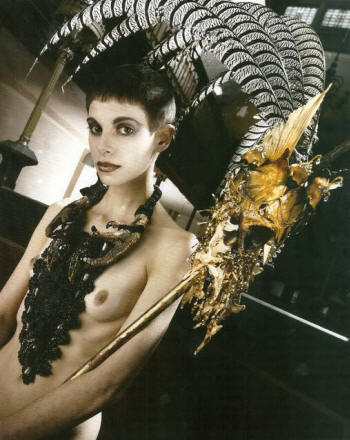
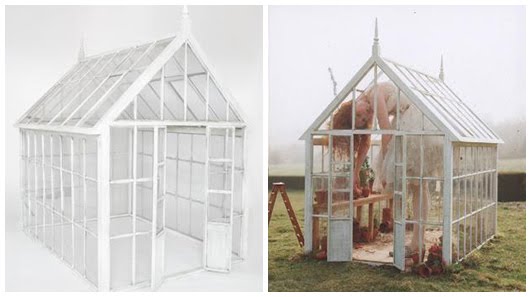 I have been very lucky in my working career to have been able to work
with several hugely talented people. My work as a set designer with
photographers really took wing when I started to work with Nick Knight
and Tim Walker (picture below left). Both have become very good friends
and the projects we have worked on together have involved many weird and
wonderful situations too numerous to mention.
I have been very lucky in my working career to have been able to work
with several hugely talented people. My work as a set designer with
photographers really took wing when I started to work with Nick Knight
and Tim Walker (picture below left). Both have become very good friends
and the projects we have worked on together have involved many weird and
wonderful situations too numerous to mention. 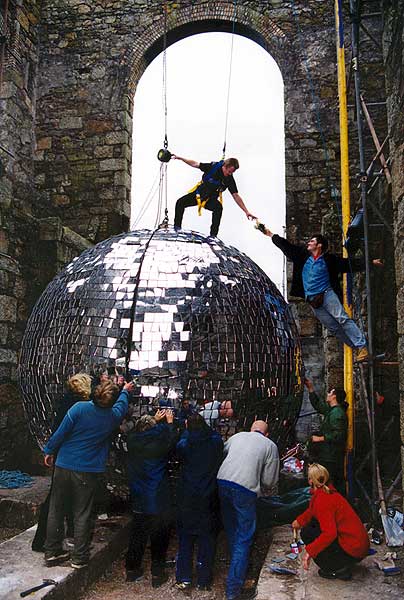 I
was invited to contribute a piece of work to the As Dark as Light
project in 1999 by Katy Sender, the organiser of the event. Each artist
was given a location to work with and I was shown a beautiful ruined tin
mine site. I installed a gigantic Glitter Ball inside one of the main
halls on the hillside, which revolved and sent beams of light across the
landscape at night.
I
was invited to contribute a piece of work to the As Dark as Light
project in 1999 by Katy Sender, the organiser of the event. Each artist
was given a location to work with and I was shown a beautiful ruined tin
mine site. I installed a gigantic Glitter Ball inside one of the main
halls on the hillside, which revolved and sent beams of light across the
landscape at night. 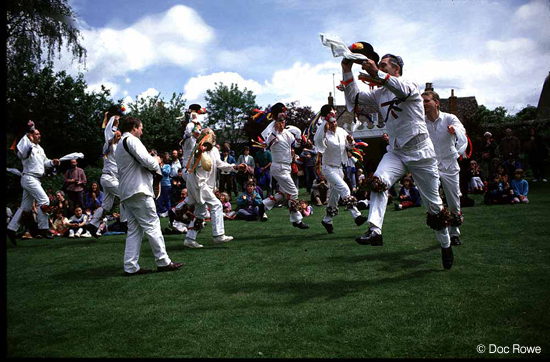 What
is the wider cultural and political significance of folklore and the
events and festivals you are most interested in? Are they just
entertainment? If not what makes them special in your view?
What
is the wider cultural and political significance of folklore and the
events and festivals you are most interested in? Are they just
entertainment? If not what makes them special in your view?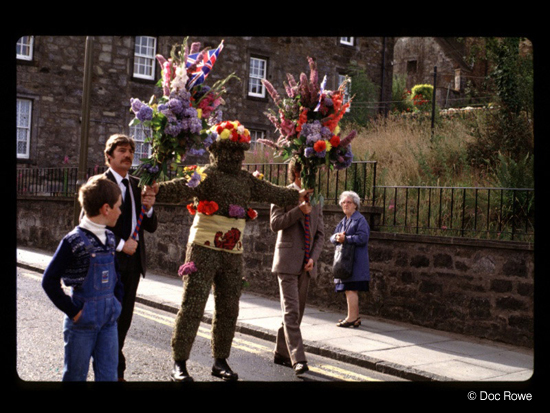 The
choice of artefacts currently being collected for the museum are drawn
from my own personal likes and is therefore hugely subjective. Once the
project expands and other curators come on board, I'm sure that will
change, and the spectrum of things will no doubt broaden.
The
choice of artefacts currently being collected for the museum are drawn
from my own personal likes and is therefore hugely subjective. Once the
project expands and other curators come on board, I'm sure that will
change, and the spectrum of things will no doubt broaden.
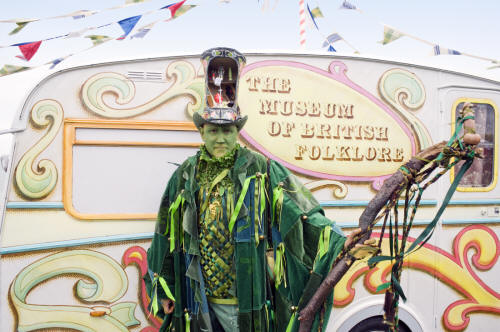 This
project is ongoing.
I see the primary focus of the museum being its collection of artefacts,
photographs, films, oral histories, manuscripts and assorted ephemera,
all drawn from the study of our annual customs themselves, as they exist
and have existed. This would form the main body of the archive, which
would be made available to the public for study and research.
This
project is ongoing.
I see the primary focus of the museum being its collection of artefacts,
photographs, films, oral histories, manuscripts and assorted ephemera,
all drawn from the study of our annual customs themselves, as they exist
and have existed. This would form the main body of the archive, which
would be made available to the public for study and research.